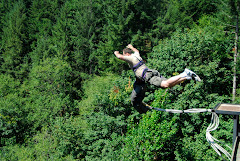Energy Efficiency, Renewable Energy ( EERE ) seems to be a puzzle that the current banking professionals seem to be attempting to solve with the same old tools ... term financing structures composed of principal and interest, fully amortizing over the useful life of the equipment (5-10 years). This is equipment finance traditionally constrained by capital equipment used in the everyday operations of going concern businesses.
The gap comes in our uncertainty regarding the production capacity of this equipment, or retrofit system solution. What happens if the spring turns out to be colder and darker that we would otherwise expect. The equipment generates less power and that power generation translates into reduced income to service debt.
Government subsidies defined by the PUC compound the issue. For example, the current Feed In Tariff (FIT) was calculated so as to pay for the cost of solar PV systems over 15 years. Within that calculation, the PUC included the cost of financing, but did so assuming a fixed rate, 15 year, fully amortizing loan facility.
Again., the gap is that this particular loan facility is seldom used, and when it is used, banks tend to add a loan pricing premium as a hedge to rising cost of funds and a generally escalating interest rate environment.
We need to think about renewable energy in a new light. I would like to throw out an idea that I think holds water as supporting vehicles for a growing EERE market.
First - when financing solar PV in concert with the FIT program, a reasonable structure for loan service would be monthly interest payments with an annual leveling payment. What I mean by this is for banks to take assignment of the FIT revenue stemming from energy production of a Solar PV system and apply that revenue to the interest portion of the loan on a monthly basis. During the winter months, the loan, consisting of an interest account and a principal account, would self service the interest portion of the debt, but would likely not reduce the principal balance of the loan. This "issue" would self correct over the Summer and fall months when the sun shines longer and the days are longer. I would expect that the interest portion of the loan would self correct over the summer months and the principal portion of the loan would be reduced. In the event that the production of the system exceeded projections, the loan would amortize faster than expected ... a good situation for the bank and for the system owner. In the event that the system failed to generate a minimum production capacity over the year's time, a leveling payment would be required by the system owner. This leveling payment could come from a pre-determined cash reserve account required by the bank at loan inception. This type of approach would mitigate payment and amortization risk to the bank and keep the investment of the system owner at a minimal level, thereby preserving the owner liquidity.
Wind systems could be addressed in a similar way ... monthly interest payment with scheduled principal balance reductions in order to keep the loan performing to the expectations of the bank or financing entity.
With some creative thinking and a willing finance community, EERE projects can be a profitable and predictable market sector.
WAKE UP !!! Thoughts that help me to live a wakeful life. danweldon@bctonline.com
About Me

- Dan Weldon
- LEED-AP NC v2.2 / MBA - George Fox University / BA - Cal Poly,San Luis Obispo / EERE Finance Program Development / Father to 2 young men of whom I am very proud.



